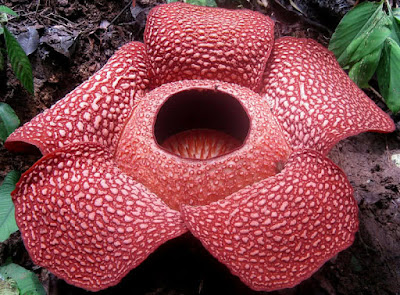The pineapple (Ananas comosus) is a tropical plant with an edible multiple fruit consisting of coalesced berries, also called pineapples, and the most economically significant plant in the family Bromeliaceae. Pineapples may be cultivated from the offset produced at the top of the fruit, possibly flowering in five to ten months and fruiting in the following six months.

Pineapples do not ripen significantly after harvest.In 2016, Costa Rica, Brazil, and the Philippines accounted for nearly one-third of the world's production of pineapples. The word "pineapple" in English was first recorded to describe the reproductive organs of conifer trees (now termed pine cones). When European explorers encountered this tropical fruit in the Americas, they called them "pineapples" (first referenced in 1664, for resemblance to pine cones). In the scientific binomial Ananas comosus, ananas, the original name of the fruit, comes from the Tupi word nanas, meaning "excellent fruit", as recorded by André Thevet in 1555, and comosus, "tufted", refers to the stem of the fruit.
Other members of the genus Ananas are often called pine, as well, in other languages. In Spanish, pineapples are called piña ("pine cone"), or ananá (ananás) (for example, the piña colada drink). Wikipedia
How to Root a Pineapple Crown
Follow these easy steps to get your pineapple plant started:
Step 1: Buy Fresh Pineapple
The next time you buy a fresh pineapple to eat, make sure to choose one that’s evenly ripe, with a nice healthy set of green leaves at the top. Avoid ones that are overripe or that have dead or sick-looking leaves.
Step 2: Slice Off Pineapple Crown
Using a sharp knife, slice off the top of the pineapple fairly close to the crown. Carefully cut away the rind and remaining fruit – it’s important to remove any fruit flesh that will rot later. Then, make very thin slices in the stalk, until you see a ring of brownish dots. These are the “root primordia,” the unformed roots that you’re about to grow.
Step 2:
Slice Off Pineapple Crown
Using a sharp knife, slice off the top of the pineapple fairly close to the crown. Carefully cut away the rind and remaining fruit – it’s important to remove any fruit flesh that will rot later. Then, make very thin slices in the stalk, until you see a ring of brownish dots. These are the “root primordia,” the unformed roots that you’re about to grow.
Dried stalk with rooting hormone

Dried stalk with rooting hormone.
Step 3: Remove Leaves from Stalk
Pull off some of the lower leaves on the pineapple stalk, exposing about an inch of bare stalk.
Step 4: Allow Stalk to Dry
Set the pineapple crown aside for a few days to allow the wound to dry. Pineapples are very susceptible to rot, so it’s important to dry out the cut end before planting.
Step 5: Plant Pineapple Stalk
Fill a 6” to 8” flower pot (clay is best, but any pot will do) with a light, fast-draining mixture – such as cactus potting mix – or a mixture of peat, sand, and perlite. If you like, you can dip the end in rooting hormone before planting. Plant the pineapple crown about an inch deep, gently firming the soil around it.

Pineapple crown planted in pot
Planted pineapple crown.
Step 6: Water Pineapple Stalk
Water the pineapple stalk very lightly, just enough to moisten the soil – a spray bottle works well for this. Put the pot in a bright window, and water the plant when it’s dry, just enough to keep it moist. Don’t use any fertilizer yet. To keep from over watering, some people put the pot in a terrarium, or in a lightly sealed plastic bag, to allow the plant to recycle its own water.
Step 7:
Wait for Pineapple to Root
It’ll take about 1-3 months for your pineapple to root. To test the progress, very gently tug on the crown to see if it is taking hold in the soil. Don’t pull hard enough to break the roots.
Step 8: Repot Pineapple Plant
Once your pineapple has firmly rooted, it will begin growing new leaves from the center. At this point, you can repot the plant in a 10” to 12” pot, using a rich but fast draining potting mix. After about a year of growing, you can move it to its final home in a large 5 gallon planter.
Source






























